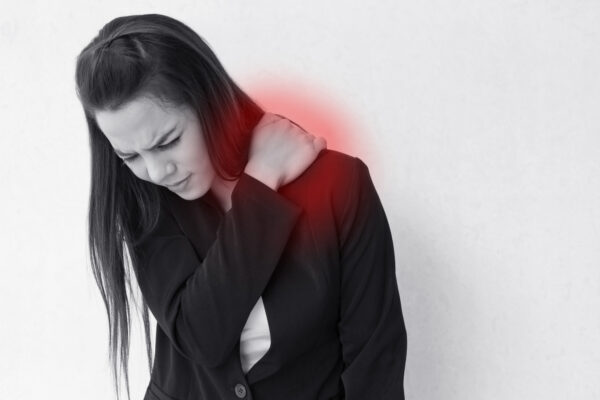
Weightlifting can lead to targeted muscle growth in desired areas, such as the glutes and legs, but may also result in unintended muscle growth, such as in the trapezius.
Botox’s off-label uses include relieving migraine pain, spasms, and bladder issues. A growing number of people, however, are discovering additional off-label applications for this injection. Most bodybuilders and athletes put a lot of time and effort into strengthening the trapezius, a muscle that runs from the top of the head to the top of the shoulders and down the upper back. However, if you feel you’ve gained too much muscle on your back or if you regularly find yourself with poor posture as a result of working at home, this can lead to a more rounded, bulky appearance than you were going for. That’s why there’s trap Botox, a treatment designed to reduce the size of the muscles in that area of the body.
Trap Botox’s Aesthetic Potential
Many women go to the gym with the intention of losing weight, getting stronger, and improving their physique without developing a “bulky” appearance. Although this is a matter of taste, there are many people whose primary goal is to pack on as much muscle as possible, making it difficult for those whose aesthetic preference is to maintain a long and lean physique. Working out with weights and increasing your muscle mass will result in gains in the areas you want to build, such as the glutes and legs, but it may also result in gains in areas you weren’t necessarily looking to bulk up, such as the trapezius.
You could stop going to the gym altogether or focus solely on cardio if you wanted to reduce the appearance and size of this muscle, but that would result in a reduction of muscle mass everywhere. Consequently, many people are having Botox injections to get rid of the extra fat around their necks and shoulders.
Medical Applications of “Trap Botox”
The benefits of controlling an overactive trapezius go beyond mere aesthetics. Stiffness and pain in the upper back and neck are common complaints among those who regularly sit with poor posture, especially those who spend their days hunched over a phone or computer. The trapezius muscle is constantly under tension and flexed in this position as it bears the brunt of the load on your head. If done frequently, it could result in lingering discomfort and even give the shoulders a more rounded appearance, a condition known as a text neck.

When injected into the trapezius, Botox can reduce stress and stiffness from muscle overuse.
Botox injections into the trapezius muscle can ease the stress and stiffness caused by the muscle’s overuse. While these injections can only provide temporary relief, they can buy you some time to focus on other strategies for enhancing your posture and reducing your reliance on this muscle.
What should you anticipate from this injection?
Locating a competent medical professional who performs shoulder injections should be your first step. Unlike Botox for the face, this one may require a bit of research to uncover. However, if you want the best results from your trapezius Botox, it’s best to find a provider who has experience with this area in particular. When you and your doctor have decided that this is the best course of action, you can then schedule a consultation to go over your goals for the injections in greater detail. They may also be able to show you before and after pictures to give you an idea of how the procedure will change your appearance.
Once you’ve done that, you can make an appointment to get your injections. Although this procedure isn’t particularly enjoyable, you shouldn’t experience any severe pain or have any recovery issues. Injections can cause pain, but icing the affected area after you get home can reduce swelling and provide temporary relief.
Do any dangers exist?
Despite the unsettling thought of willingly injecting a neurotoxin into your muscle, Botox is a relatively low-risk cosmetic procedure. Problems may arise if you visit an unqualified provider, but if you check that they maintain a clean and secure facility, you shouldn’t have any problems. It’s possible that the area around the injection site will be sore or bruised immediately after the procedure, but both of these side effects should fade over the next few days. Botox may also spread to other parts of the body and weaken or impair the function of other muscles; however, this is unlikely to be an issue if administered by a trained medical professional.
It is also possible, albeit highly unlikely, to develop an allergy to Botox. A trip to the emergency room is warranted for anyone who develops a rash, significant swelling, hives, or trouble breathing, even if such reactions are rare. The warnings should be taken seriously, however, to prevent any further damage.
What is the price of “Trap Botox”?
Your doctor’s fee structure, the average cost of medical care in your area, and the quantity of Botox you require to achieve your goals all play a role in how much your full trapezius Botox session will cost. Botox typically costs between $10 and $15 per unit, and about 50 units are injected into the trapezius muscle on each side at a total of five different points to reduce its activity. Depending on the specifics of your case, the total cost per session could be anywhere from $1,000 to $1,500 when both sides are considered.
Dentox is a course designed to educate medical professionals on the proper way to administer Botox injections. Discover cutting-edge methods for improving your patients’ well-being. Visit https://dentox.com/all-courses/botox-training/ for details on our online patient training courses, and https://dentox.com/live-courses/ for information on our in-person training sessions.







